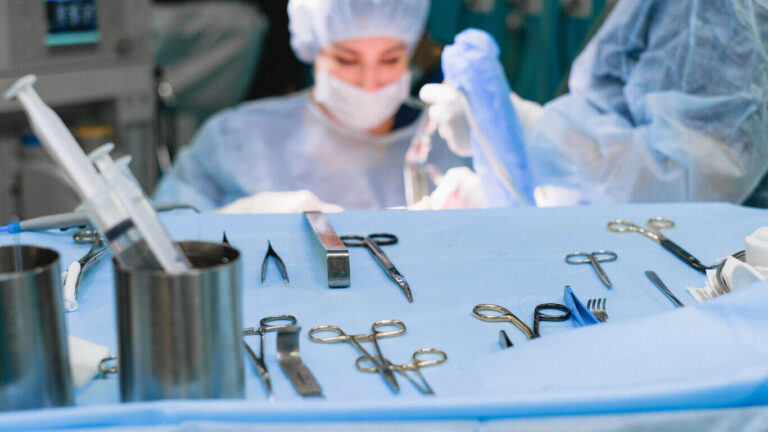Lymphedema Plastic Surgery
How Plastic Surgery Can Help Manage Lymphedema: A Comprehensive Guide
Lymphedema can be a life-altering condition that impacts physical and emotional well-being. While traditional treatments like compression therapy and manual drainage are effective, plastic surgery is emerging as a transformative option for many patients. This guide explores how surgical interventions can offer hope and relief for managing lymphedema, blending advanced science with compassionate care.

What Is Lymphedema, and Why Consider Surgery?
Lymphedema is characterized by swelling caused by fluid accumulation due to a compromised lymphatic system. It often affects the arms or legs but can occur in other areas.
Traditional Treatments vs. Surgical Solutions
- Traditional Treatments: Compression garments, physical therapy, and lifestyle changes are the cornerstone of management but may not fully resolve symptoms.
- Surgical Options: Plastic surgery can address the root cause by repairing or rerouting lymphatic pathways, providing long-term relief.
Understanding Plastic Surgery for Lymphedema
Surgical interventions for lymphedema aim to restore lymphatic function or reduce excess tissue caused by prolonged swelling.
Types of Lymphedema Surgery
- Lymphovenous Anastomosis (LVA)
- A minimally invasive procedure that connects lymphatic vessels to nearby veins.
- Best suited for early-stage lymphedema.
- Vascularized Lymph Node Transfer (VLNT)
- It involves transplanting healthy lymph nodes from another body part to the affected area.
- Encourages new lymphatic pathways to form.
- Liposuction for Lymphedema
- Removes excess fatty tissue and fluid caused by chronic swelling.
- Ideal for patients with advanced lymphedema where fibrosis has occurred.
- Debulking Surgery
- A more invasive option for extreme cases is to remove hardened tissues.
Who Is a Candidate for Lymphedema Surgery?
Only some people with lymphedema are immediate candidates for surgery.
Factors to Consider
- Stage of lymphedema (early vs. advanced).
- Overall health and medical history.
- Commitment to post-surgical care, including physical therapy and compression.
Consultation and Pre-Surgical Evaluation
A thorough lymphedema specialist and plastic surgeon evaluation is crucial to determine eligibility.
Benefits of Plastic Surgery for Lymphedema
- Improved Quality of Life
- Reduced swelling and discomfort.
- Enhanced mobility and functionality.
- Reduced Dependency on Traditional Treatments
- Many patients report less reliance on compression garments post-surgery.
- Aesthetic and Emotional Benefits
- Restores a more natural appearance to the affected limb.
- Boosts confidence and mental well-being.
Risks and Considerations
As with any surgical procedure, lymphedema surgeries come with potential risks.
Common Risks
- Infection at the surgical site.
- Scarring or poor wound healing.
- Temporary or permanent nerve damage.
How to Minimize Risks
- Choose an experienced surgeon specializing in lymphedema procedures.
- Follow all pre-and post-operative instructions diligently.
The Surgical Process: What to Expect
- Preparing for Surgery
- Comprehensive health assessments, including imaging tests.
- Discontinuation of certain medications as advised by your doctor.
- The Day of Surgery
- Most lymphedema surgeries are performed under general anesthesia.
- Procedures typically last 2-6 hours, depending on complexity.
- Recovery Timeline
- Hospital stay: 1-3 days (varies by procedure).
- Return to normal activities: 4-6 weeks.
- Long-term results may take months to manifest fully.
Emerging Trends in Lymphedema Surgery (2025)
Advancements in medical technology are revolutionizing lymphedema treatment.
- Robotic-Assisted Surgery
- Enhances precision and minimizes recovery time.
- Bioprinting and Tissue Engineering
- Research is underway to create bioengineered lymph nodes for transplantation.
- AI in Pre-Surgical Planning
- Artificial intelligence helps surgeons map out personalized treatment plans with greater accuracy.
Post-Surgical Care and Maintenance
Successful outcomes depend heavily on post-operative care.
- Compression Therapy
- Essential for preventing fluid buildup during recovery.
- Physical Therapy
- Specialized exercises help improve lymphatic drainage.
- Regular Follow-Ups
- Routine check-ups ensure the surgical site is healing properly and monitor for recurrence.
Cost of Lymphedema Surgery
Factors Affecting Cost
- Type of procedure.
- Surgeon’s expertise and geographic location.
- Hospital or clinic fees.
Insurance Coverage
- Many insurance plans now cover lymphedema surgery as a medical necessity rather than a cosmetic procedure.
Financing Options
- Payment plans and medical loans may be available for those without full coverage.
Success Stories: Real-Life Transformations
Many patients report significant improvements after undergoing plastic surgery for lymphedema.
- Case Study 1: A breast cancer survivor regained full arm mobility after LVA.
- Case Study 2: A patient with severe leg swelling achieved a 70% reduction in symptoms following VLNT.
How to Find the Right Surgeon
Choosing a skilled and experienced plastic surgeon is critical.
- Credentials and Certifications
- Ensure the surgeon is board-certified in plastic and reconstructive surgery.
- Experience in Lymphedema Procedures
- Ask about their success rates and the number of lymphedema surgeries they have performed.
- Patient Reviews and Testimonials
- Look for feedback from previous patients to gauge satisfaction levels.
Conclusion
Plastic surgery offers hope for managing lymphedema, providing long-term relief and improved quality of life. With advancements in medical technology and growing awareness, patients have more options than ever in 2025. If you or a loved one is considering surgical intervention, consult a lymphedema specialist to explore personalized solutions.
FAQs
- Is plastic surgery for lymphedema a permanent solution?
While surgery can significantly reduce symptoms, ongoing maintenance, like compression therapy, may still be required.
- How long does it take to see results after lymphedema surgery?
Results vary, but most patients notice improvements within 3-6 months post-surgery.
- Does insurance cover lymphedema surgery?
Many insurance plans now recognize these procedures as medically necessary and provide coverage.
- Are there non-surgical alternatives to manage lymphedema?
Yes, traditional methods like compression therapy, manual lymphatic drainage, and exercise are effective for many patients.
- What is the success rate of lymphedema surgery?
Success rates depend on the type of surgery and patient adherence to post-operative care, but most studies report significant symptom improvement.
